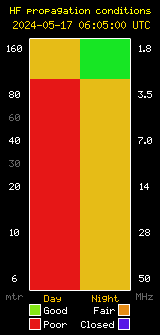Tonight’s net was informative as usual with 13 check-ins plus “Shackmaster” Dave (K6HWN) as net control and 6 chat room participants. Questions included:
Casey (KK6VIF) had a little difficulty being heard and Dennis (WB6OBB) mentioned that he may have pressed his WIRES button, the one that looks like an atomic symbol. Indeed he had and said he didn’t remember doing it and doesn’t even know what it is or does and wondered of Dennis could shed some light. Dennis not being familiar with Casey’s rig handed off to Brian (K6BPM). Brian explained that the atomic button connects the radio to the WIRES (Wide-coverage Internet Repeater Enhancement System). If your radio has WIRES capability you can connect to a WIRES Digital Node Station which connects your communications to the internet enabling you worldwide communications with other Hams. You can read more about it here https://www.yaesu.com/jp/en/wires-x/index.php.
Garrett (AG6RQ) asked about the new ham bands opening on 136 kHz and 400 kHz. Steve (KI6HGH) answered partially and Tom (KA6FOX?) took it further explaining the allocations, specifications and capabilities. You can listen to the topic here.
Shackmaster Dave (K6HWN) talked a little about antennas and grounds.
Casey (KK6VIF) asked what shack radio he could use on all bands. It was explained that some radio cover HF, 6 meters , 2 meters and 70 cm but rarely cover ALL ham bands. Dennis (WB6OBB) also brought up the point that if you had all bands on one radio and it went down everything would be down. It’s a practical idea to have some back up radios, maybe handy talkies in case of something like that.
Tune in to the SBARC Technical Mentoring and Elmering Net next Thursday at 8:00 PM or 2000 Hrs and see what interesting questions will arise or ask some of your own! All club members and visitors are encouraged to check in to the Technical Mentoring and Elmering net each week and join in with questions and /or answers to and contribute the knowledge of new and seasoned amateur radio operators alike.









